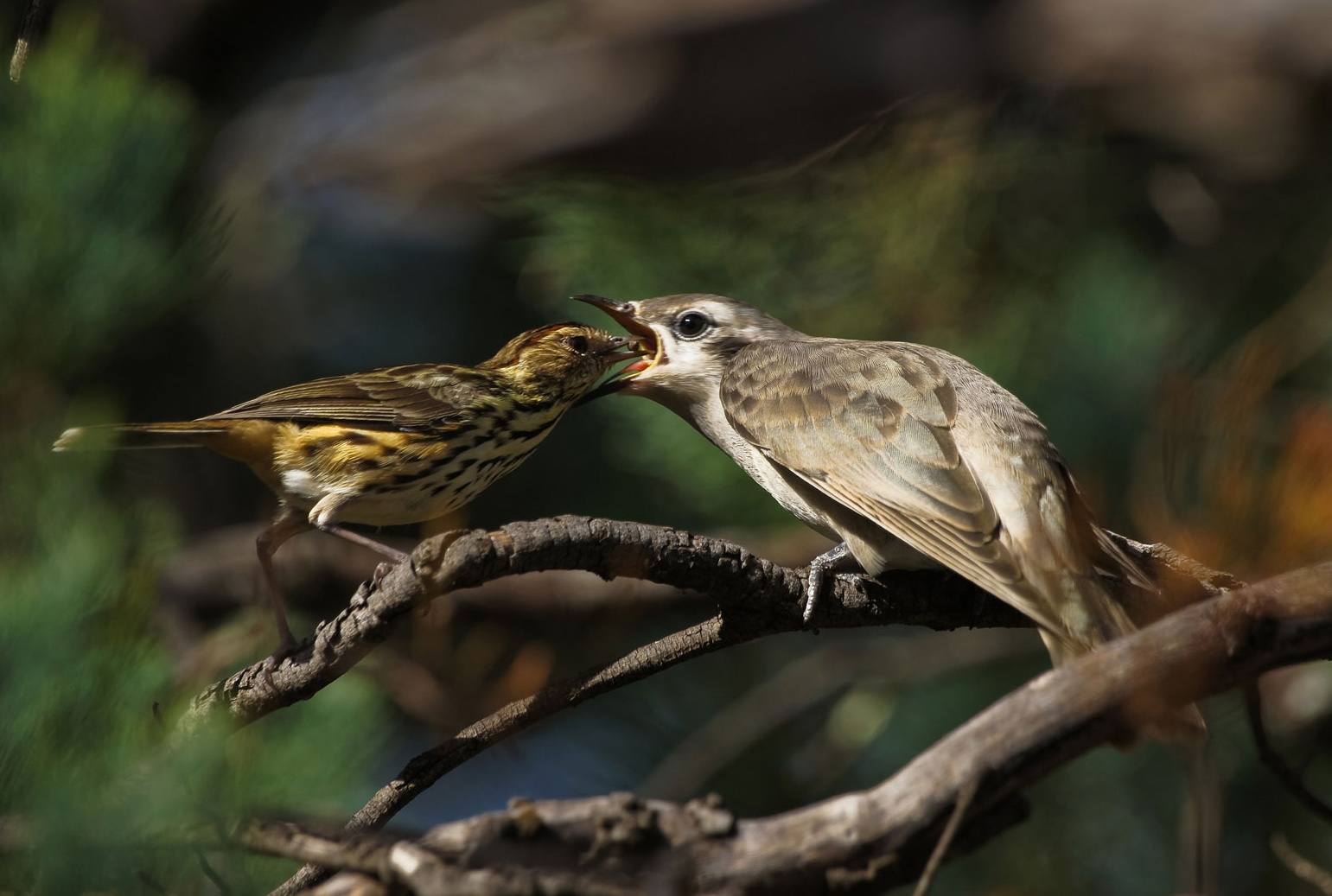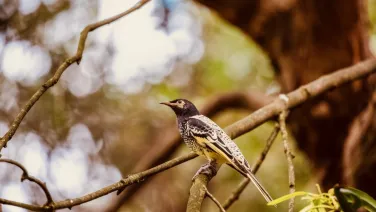
Langmore Group - Avian evolutionary and behavioural ecology
We study many aspects of evolutionary and behavioural ecology in birds, mainly by using field experiments and observations to test evolutionary theory.
Research theme
Research themes
Division
About
We study many aspects of evolutionary and behavioural ecology in birds, with particular emphasis on co-evolution between brood parasites and their hosts, signalling (songs, calls and displays), mimicry and crypsis, breeding systems, and evolutionary responses to climate change. Our main approach is to use field experiments and observations to test evolutionary theory.
Awards
- BirdLife Australia - D.L. Serventy Medal, 2019
- Ignition Grant, 2019
- Holsworth Wildlife Research Endowment, 2019
- 2017 RSB Outstanding Thesis Prize, 2017
- The Professor Allen Keast Research Award, 2017
- Professor Allen Keast Research Award , 2017
- Holsworth Wildlife Research Endowment, 2017
- Best poster prize, 2016
- Marsden Fund Research Grant, 2013
- Hermon Slade Research Grant, 2012
- Australian Research Fellowship and Discovery Grant, 2011
Publications
Selected publications
- Langmore, NE, Hunt, S & Kilner, RM (2003) Escalation of a coevolutionary arms race through host rejection of brood parasitic young. Nature, 422, 157-160.
- Russell AF, Langmore NE, Cockburn A, Astheimer LB, Kilner RM. (2007). Reduced egg investment can conceal helper effects in cooperatively breeding birds. Science 317: 941-944.
- Langmore, N.E., Maurer, G., Adcock, G.J., Kilner, R.M. (2008). Socially acquired host-specific mimicry and the evolution of host races in Horsfield's bronze-cuckoo Chalcites basalis. Evolution 62: 1689-1699.
- Heinsohn, R., Langmore, N. E., Cockburn, A., Kokko, H. (2011) Adaptive sex ratio adjustments via sex-specific infanticide in a bird. Current Biology, 21: 1744-1747.
- Kilner R. M. and Langmore, N. E. (2011) Cuckoos versus hosts in insects and birds: adaptations, counter-adaptations and outcomes. Biological Reviews, 86: 836-852
- Langmore, N. E., Stevens, M., Maurer, G., Heinsohn, R., Hall, M. L., Peters, A., Kilner, R. M. (2011). Visual mimicry of host nestlings by cuckoos. Proceedings of the Royal Society: Biological Sciences 278: 2455-2463
- Feeney, W, Medina, I, Somveille, M, Heinsohn, R, Hall, ML, Mulder, RA, Stein, JA, Kilner, RM, Langmore, NE (2013) Brood parasitism and the evolution of cooperative breeding in birds. Science 342: 1506-1508
- Odom, KJ, Hall, ML, Riebel, K, Omland, KE, Langmore, NE (2014) Female song is common and ancestral in songbirds. Nature Communications, Published online 2014/03/04/online, Vol 5 article 3379.
- Heinsohn, R., Zdenek, C. N., Cunningham, R. B., Endler, J., Langmore, N. E. (2017) Tool-assisted drumming in a wild bird population. Science Advances, 3 (6): e1602399
- Riebel, K, Odom, KJ, Langmore, NE, Hall, ML. (2019) New insights from female bird song: towards an integrated approach to studying male and female communication roles. Biology Letters: 20190059
- Crates, R, Langmore, NE, Ranjard, L, Stojanovic, D, Rayner, L, Ingwersen, D, Heinsohn, R. (2021) Loss of vocal culture has fitness consts in a critically endangered songbird. Proc. R. Soc. B. 288: 20210225.
- Langmore, NE, Grealy, A, Noh, H-J, Medina, I, Skeels, A, Grant, J, Murray, KD, Kilner, RM, Holleley, CE (2024) Coevolution with hosts underpins speciation in brood-parasitic cuckoos. Science 384: 1030-1036 https://www.science.org/stoken/author-tokens/ST-1897/full





